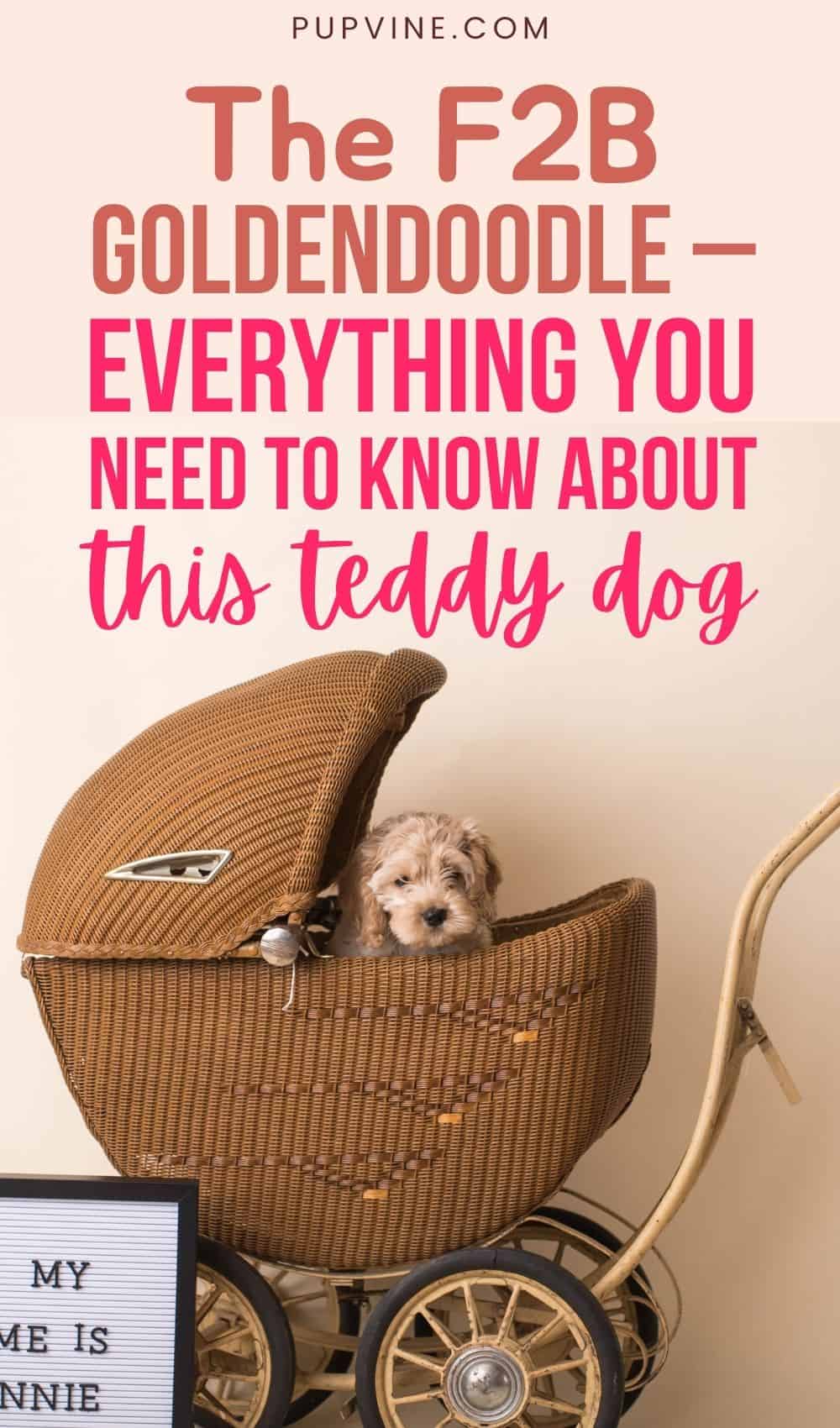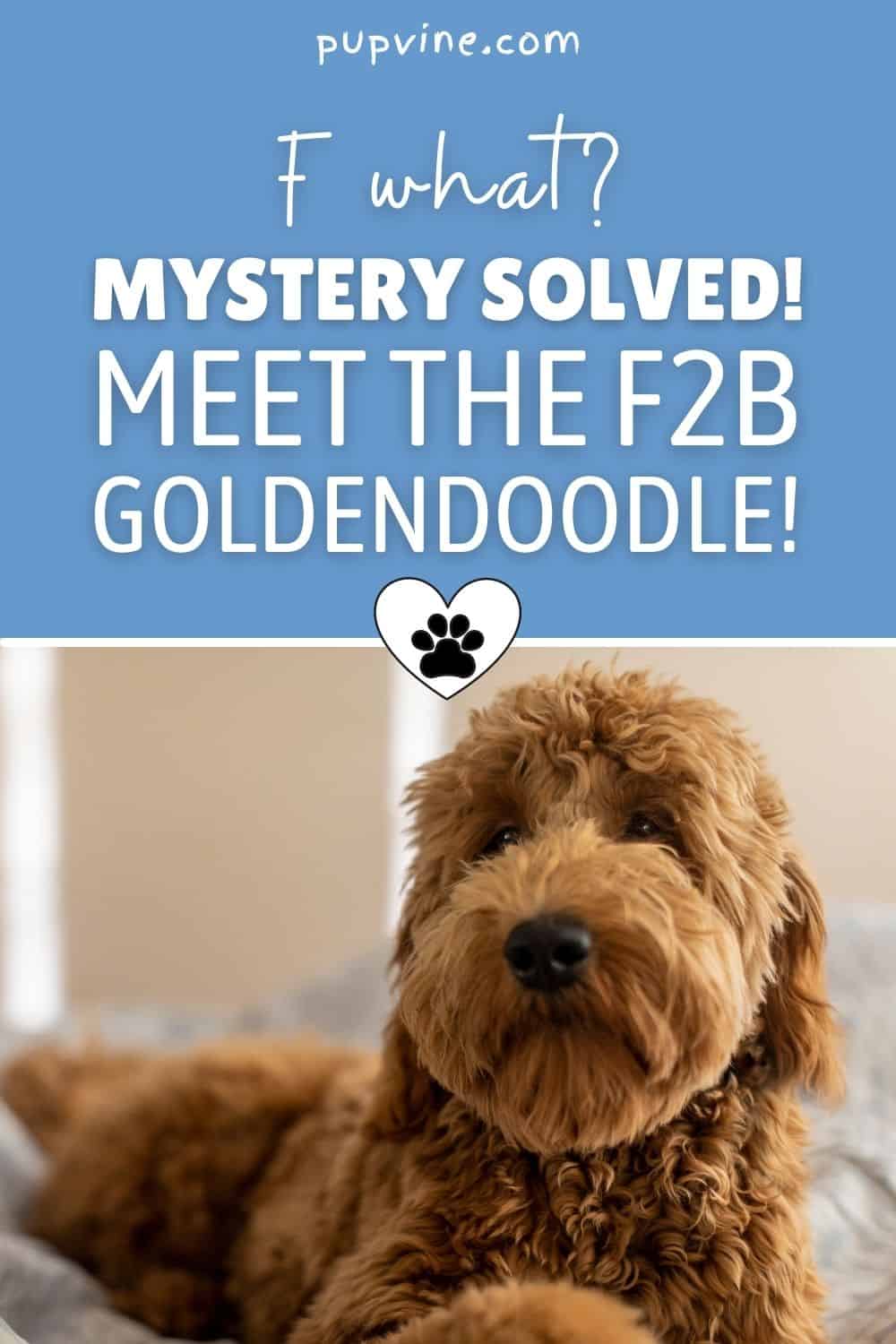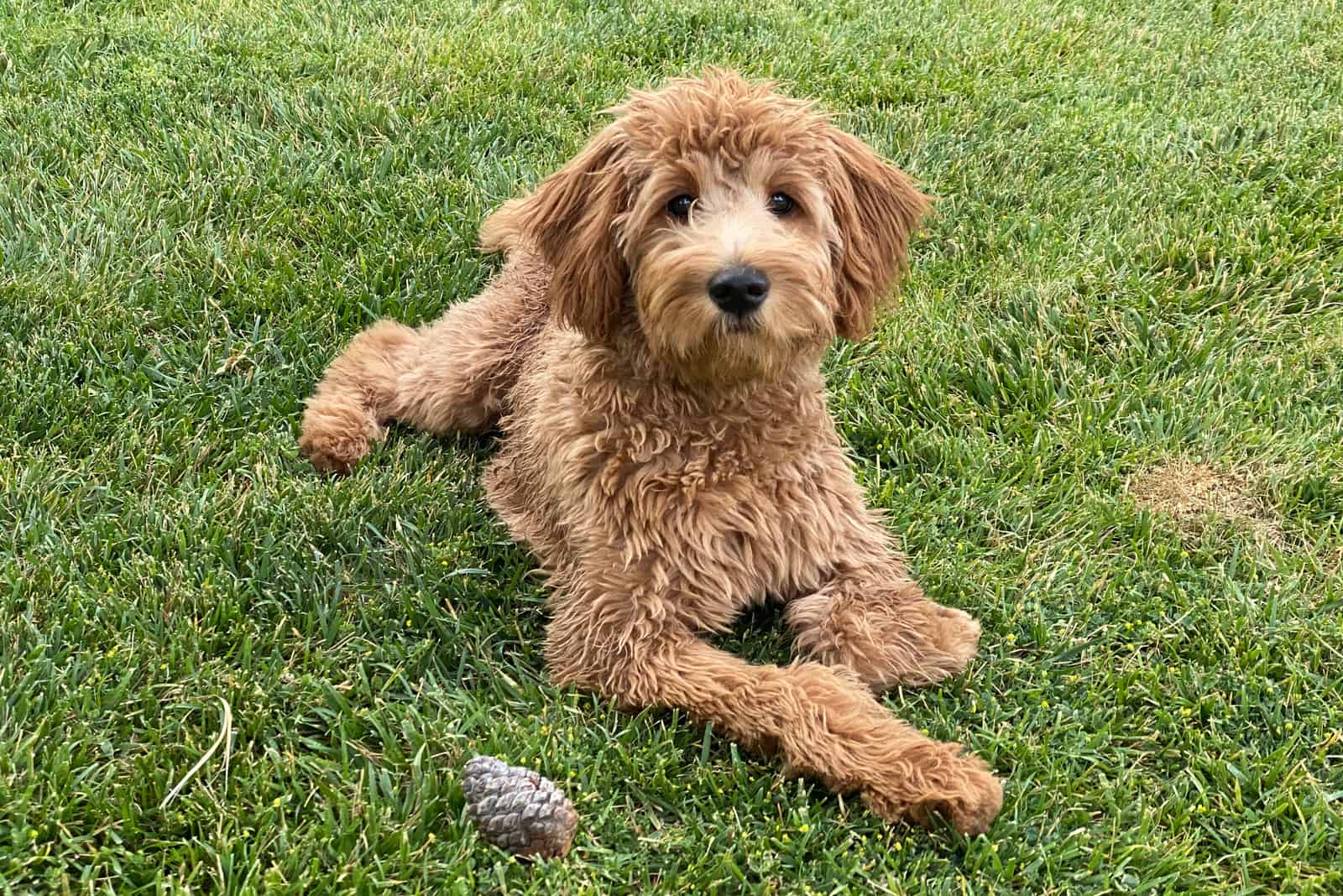F1, Fb, F2, F2b, F2bb, F3, etc…
So many F’s!
Admit it: you definitely had no idea so many amazing Goldendoodle generations exist!
For over twenty years, Goldendoodles have tried to make our lives better. Did they succeed? Oh, boy, they did! Especially the F2B generation!
What do you mean: all Goldendoodle generations are the same, Karen?
No, they’re not! And today, we’re going to show you why they aren’t the same.
Buckle up and let’s enjoy the ride through the magical world of Goldendoodles. We’ll make a short stop on the F2B Goldendoodle station. Did everybody get their passports?
Okay, let’s Doodle away…
The Beginning Of A New Breed: The Goldendoodles!
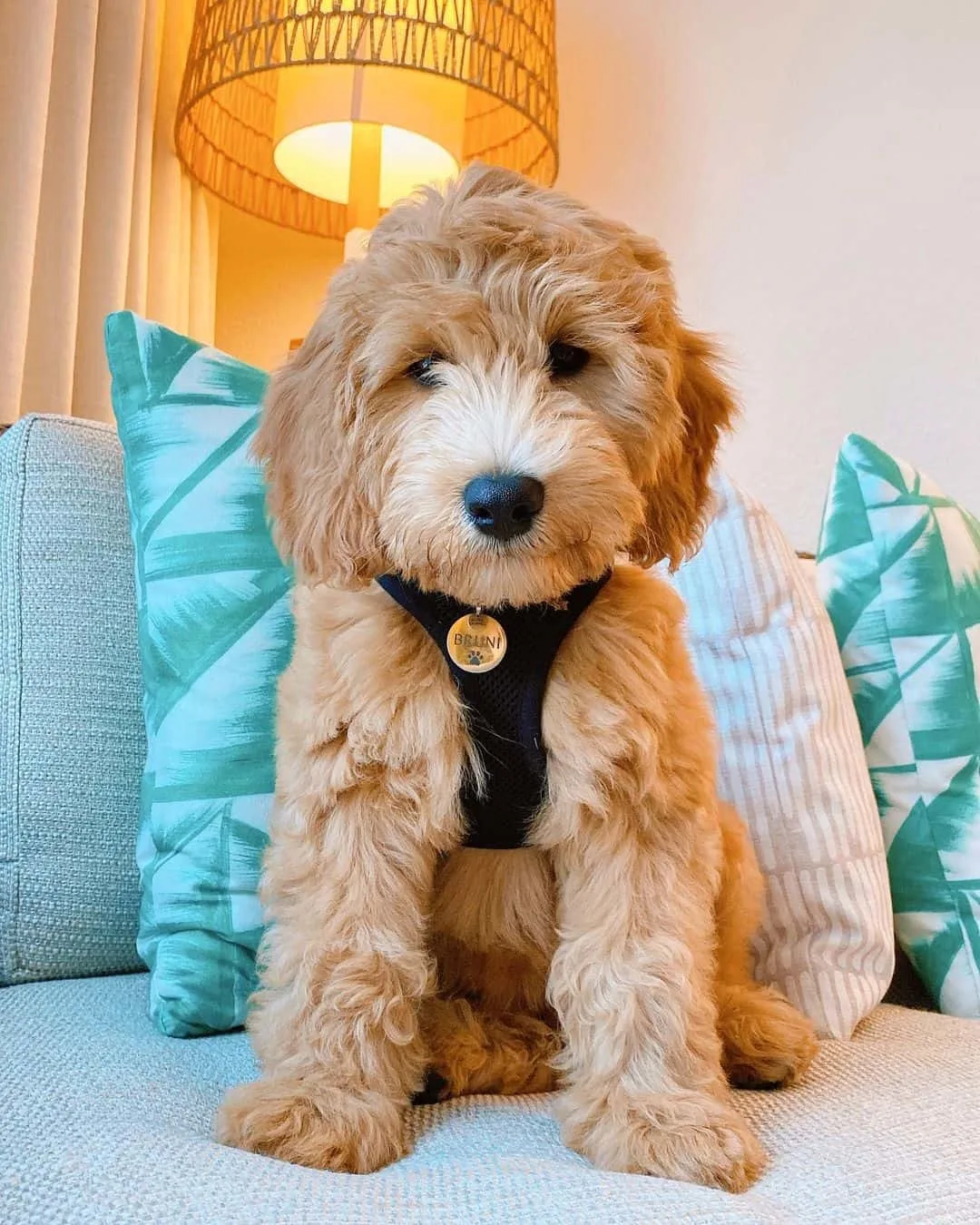
Photo from:@bruni.thedoodle
The Goldendoodle is a designer dog, a result of breeding the Poodle and the Golden Retriever together. Like many other hybrid dogs, the Goldendoodle is technically not a dog breed. This is a crossbreed and the one that’s living the glory days!
The whole point of crossbreeding is to create a puppy that will inherit only the best traits from both parents. Luckily, the Goldendoodle only got the best!
These pups are highly intelligent and loving, and they only shed a little. You can’t beat that! The Goldendoodle will be the perfect match for any dog lover!
The Goldendoodle is considered to be one of the latest Doodle versions, or better yet, a Poodle mixed-breed. The breeding of Goldendoodles began in the 1990s, just after the world got richer with a Cockapoo and a Labradoodle.
The goal was to create a Doodle puppy, larger than other Doodles, that would still have the low-shedding and low-dander traits, and also be intelligent and friendly.
As we said before, the best of both worlds created what’s today known as a Goldendoodle!
Since the Goldendoodles are a quite young crossbreed, it can only mean almost all Goldendoodles are F1 Doodles, the first-generation puppies.
To make things even clearer for newbies: first-generation puppies are the offspring of the Poodle (in this case) and the Golden Retriever because breeding rarely happens between two Goldendoodles.
Despite the high demand and all the popularity that follows this crossbreed, the Goldendoodle isn’t recognized by any official dog clubs.
Some online communities gather Doodle lovers and owners, but nothing besides love for these pups keeps them together.
Having in mind the Goldendoodle’s current popularity, we can only imagine what it would be like in the future. This Doodle will definitely outdoodle all the other Doodles!
F2 Goldendoodles are truly dogs with golden hearts. They deserve only the finest dog equipment on the market. Well, our list has some pretty awesome products you could use.
[table id=196 /]
How Many Types Of Goldendoodles Are Out There?
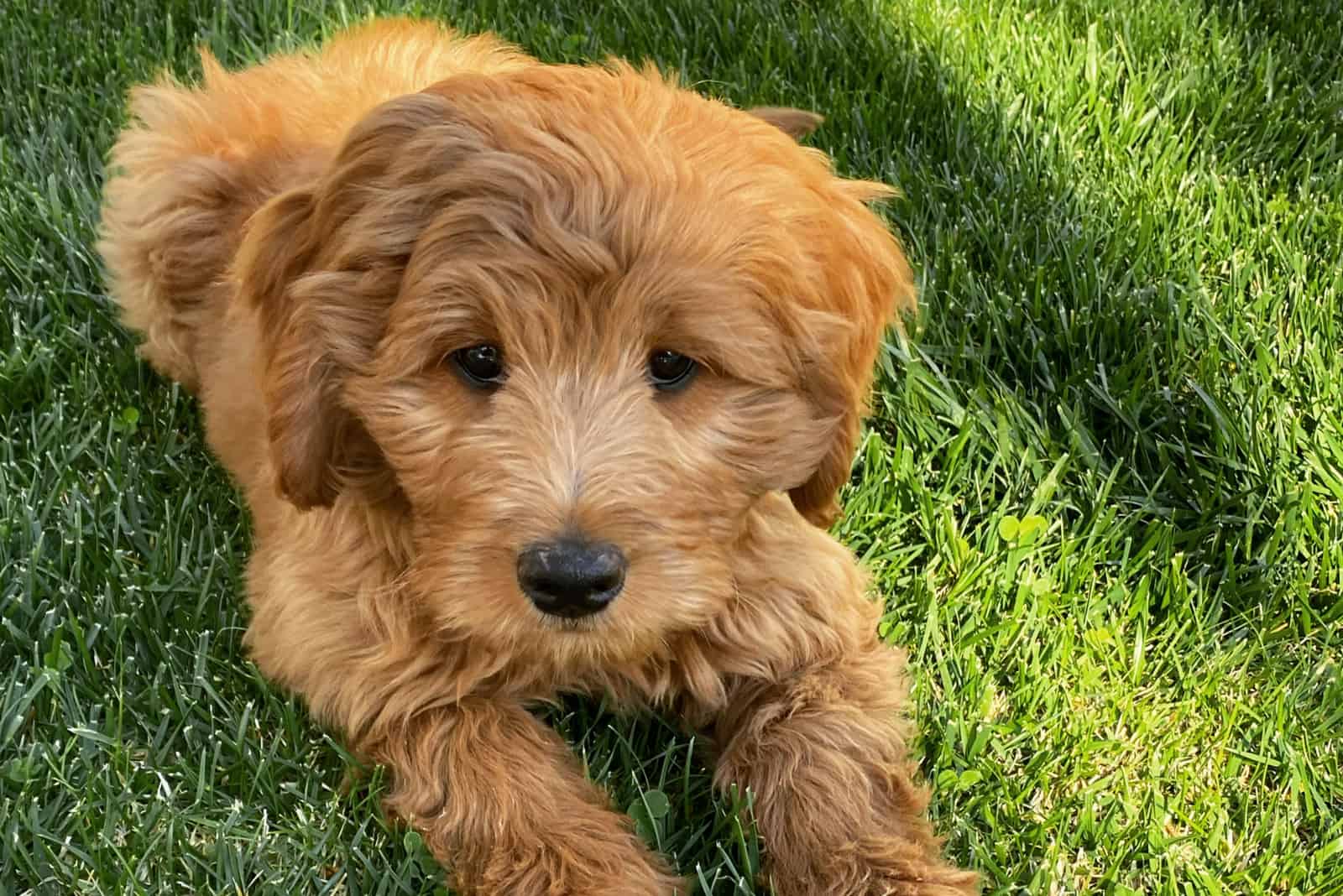
The answer? Many.
Goldendoodles can be classified by size, coat color, or coat type. The more, the merrier!
The division by generation type is the most common one. Dog breeders use terms such as F1 or F2b to identify which generation of Goldendoodles it’s about.
Here’s an easy list that will make things about Doodle generations clear in your head:
• F1 Goldendoodle: 100% Golden Retriever x 100% Poodle
• F1b Goldendoodle (first generation backcross): 100% Poodle x F1 Goldendoodle
• F2 Goldendoodle: F1 x F1 OR F2 Goldendoodle x Poodle
• F2b Goldendoodle: F1 x F1B OR F2 x Poodle
The point of generations and generation of breeding is to reduce any abnormalities found in the current generation.
Moving on, have you ever heard of the teddy bear Goldendoodles? No, it’s really not a whole new breed; it’s just a way to describe a cross between an English Golden Retriever and the Standard Poodle. As we said, it’s not a different cross; it’s only another Goldendoodle type.
Goldendoodle types vary in size, too. Sizes go from 25 pounds to 80 and more!
The Poodle breed is a smaller dog breed in this combination, so it will bring the “small size” gene in the pool. The Poodle sizes go from Miniature to Standard. It’s indeed a versatile dog breed that can get as big as 60 pounds and as small as a teensy tiny pup that fits in your purse!
As for the other parent, the Golden Retriever, they’re quite standard in size. The American Kennel Club says that female Goldens can weigh around 55 to 65 pounds, and male Goldens, around 65 to 75 pounds.
Keeping in mind the size of this dog’s parent, it’s only natural to say that Goldendoodles are not tiny lap dogs and they’ll never be.
To finally find out how big your Goldendoodle is, you’ll have to wait till it reaches adulthood. The reason behind this is that crossbreeds, unlike purebreds, have many variations in size.
However, we can still take a look at this framework of standard sizes set by the Goldendoodle Association of North America:
• petite: about 25 pounds
• mini Goldendoodle: 26-35 pounds
• medium Goldendoodle: 36-50 pounds
• standard Goldendoodle: 51+ pounds
Finally, it’s time to discuss classification according to coat color and type. Even though it has golden clearly stated in the name, this isn’t a reference to the Doodle’s coat color. The coat color depends on which colors the parents come in.
The AKC states the purebred Poodle parent may come in a dozen colors, such as apricot, red, black, chocolate, white, and silver, being just a few of them. The other side of the puppy family, the Golden Retriever, can come in a range of golden colors, from light to dark.
There’s an explanation for all these Goldendoodle coat colors! Come and take a look at some of the most popular colors Goldendoodle puppies come in:
• apricot
• cream
• black
• chocolate
• particolored (mix of colors)
• merle
• phantom (a pattern of markings)
Now we know the colors they come in, but we don’t know the coat types. Fear not, the Goldendoodle coat is pretty standard; it comes in a range from straight to wavy and curly. Pretty simple, isn’t it?
Such coat type diversity happens because of the different coats the parents carry. The Poodle has a curly coat while the Golden has a smooth or straight coat. Of course, the two will mix! You never know which side of the family you’ll get more in your Doodle.
What Is An F1 Goldendoodle?
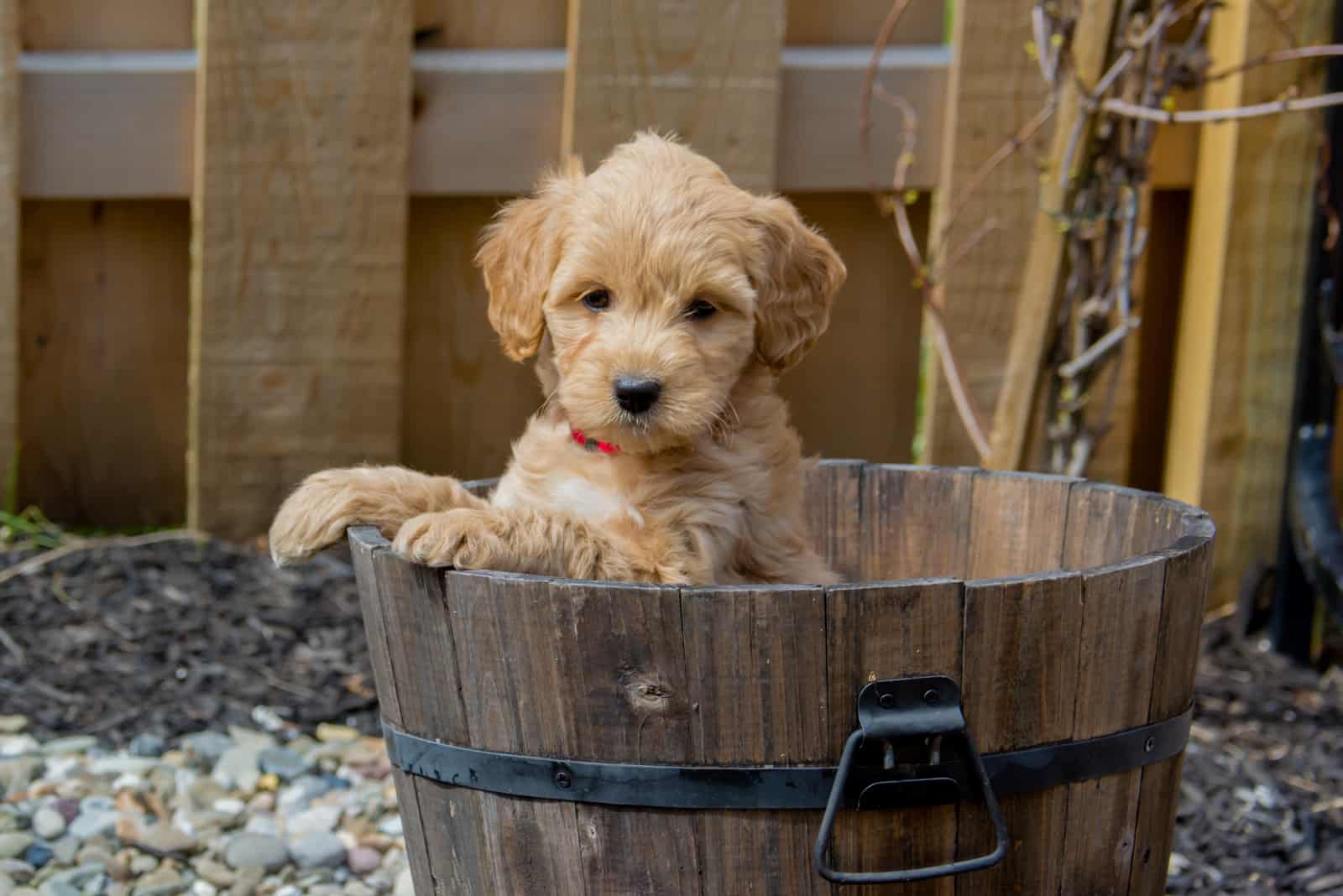
An F1 Goldendoodle is a cross between a purebred Golden Retriever and a purebred Poodle.
In other words, you’ve got 50% of the Golden Retriever and 50% of the Poodle. This is also named a “first cross.”
To understand the term, F1, here’s a scientific definition:
F1 is the first filial generation of offspring of distinctly different parental types.
Now that your nerdy side is satisfied, let’s check out some general characteristics an F1 Goldendoodle has.
First of all, the F1 Goldendoodle has a variety of coat types. Some Doods carry a straight coat while some have a wavy or curly coat. The reason behind such diversity is the fact that Poodles and Golden Retrievers are quite different dog breeds.
This is exactly why we can’t say if the F1 Doodle is hypoallergenic or not. There’s no such thing as a hypoallergenic crossbreed. All dogs shed… some less, some more. Your Goldendoodle will shed depending on which side of the family it leans to.
If it resembles Poodles, it will shed less since a curly coat is claimed to be low-shedding.
The coat colors are dependent on the parent breeds, too! The most common F1 Goldendoodle colors are:
• ivory
• cream
• red
• apricot
• chocolate
• black
• parti
All in all, the F1 Goldendoodle is the first generation of golden Doods that stole our hearts with their cute little puppy eyes and teddy bear-like appearance.
What Is An F1B Goldendoodle?
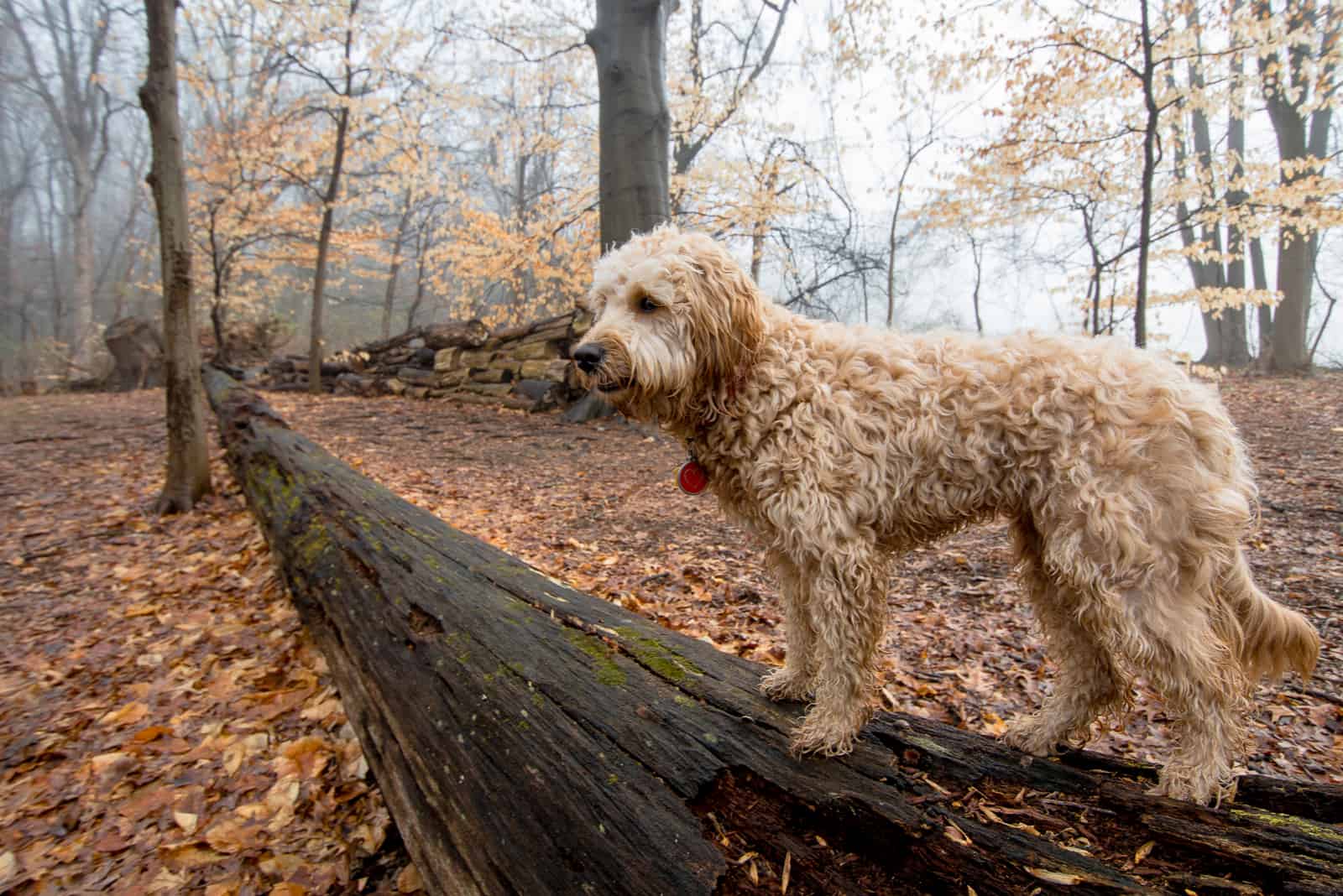
The F1B Goldendoodle is the next generation of Goldendoodles. Here, we have a combination of 75% of the Poodle and 25% of the Golden Retriever. They’re a backcross of an F1 Goldendoodle and purebred Poodle.
Like all the other backcrossing results, the F1B Goldendoodle was created to limit shedding and improve coat quality. Surprisingly, the experiment worked! The F1B Goldendoodle is much more allergy-friendly and has a curlier coat than the first generation.
The F1 Goldendoodle sheds more than the F1b Goldendoodle, meaning the F1B Goldendoodles shed rarely and are more hypoallergenic. Great news for people suffering from severe allergies!
The F1b Goldendoodle is considered the most hypoallergenic of all the other Goldendoodles. They don’t have to look like the Poodle parent or act like one. What only matters is they got the Poodle’s good genes!
What Is An F2 Goldendoodle?
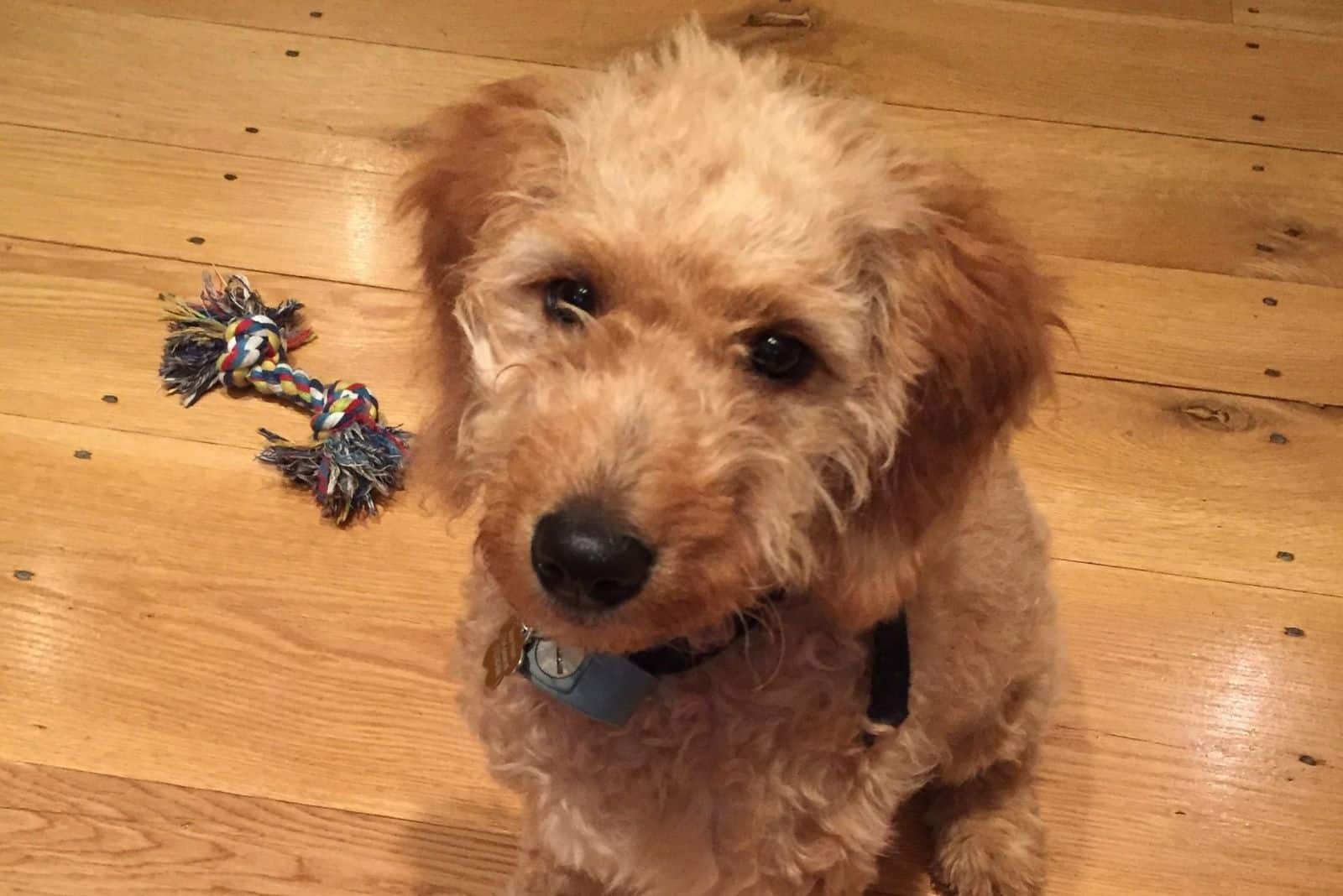
An F2 Goldendoodle is a second-generation Goldendoodle. Obviously, the F2 here stands for the second generation. This is a result of breeding an F1 Goldendoodle with another F1 Goldendoodle.
The F2 generation Goldendoodle is mostly like the F1 Goldendoodle because both are 50% Golden Retriever and 50% Poodle. Also, their temperament resembles the F1 Goldendoodle.
These pups are similar to F1 Goldendoodles, but aren’t worth more than the first-generation Goldendoodles.
What makes the F2 a great generation is the fact that they’re non-shedders and hypoallergenic. Still, we can’t guarantee this 100% because there were cases of shedding, although very rare.
However, we do recommend the F2 generation to those of you who suffer from moderate to severe allergies. If you want a dog that will let you breathe, then get an F2 Goldendoodle!
These pups come in three sizes:
• Small – unlike F2 English Goldendoodles, which DO NOT come in small size
• Medium – 35-50 pounds
• Standard – 55+ pounds
Dog Of The Day: The F2B Goldendoodle
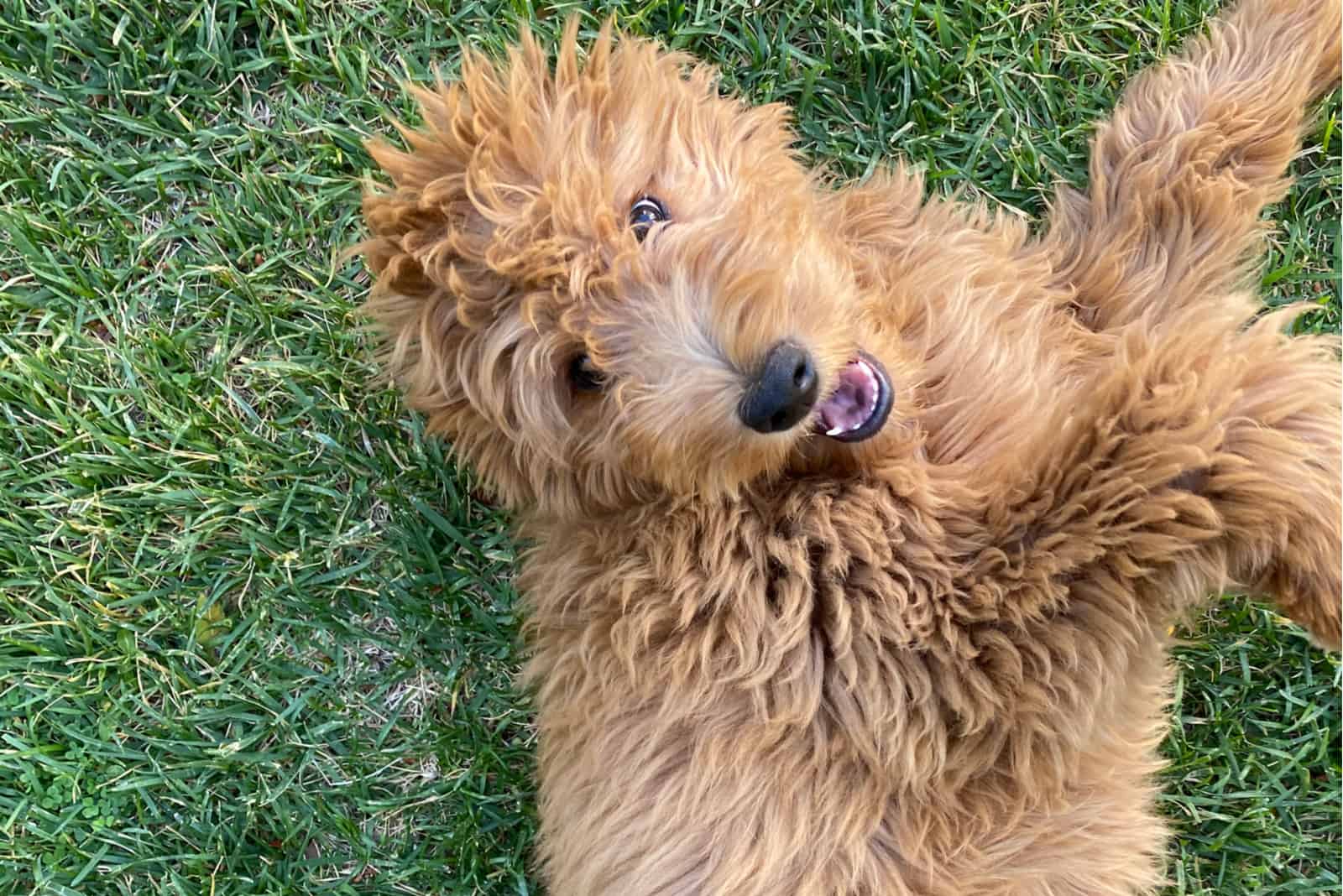
The F2B Goldendoodle is 62.5% Poodle and 37.5% Golden Retriever crossed with an F1 Goldendoodle. Sometimes, dog breeders decide to use an F1B Goldendoodle and another F1B, which would result in getting an F2B (75% Poodle and 25% Golden Retriever).
The F2B generation has a significant amount of Poodle genes that give the Doodles a wavy or curly coat. Such coats mean less shedding, more hypoallergenic features, and more fun!
The F2B Goldendoodle generation is often called a multi-generation Goldendoodle since they are the 3rd generation of offspring.
Read Next: Why Goldendoodles Are The Worst — 9 Doodle Drawbacks
F2B Goldendoodle Characteristics: What Are They Like?
The F2B Goldendoodles are as unique as one might think! Just imagine: they’re another new and improved version of an already perfect dog – the Goldendoodle.
Like many Goldendoodle predecessors, this pooch has a recognizable curly or wavy coat, meaning they’re hypoallergenic and they don’t shed as much as you’d think. These pups are also hybrid vigors, but in a smaller amount than the original F1 generation.
This is only short info about the F2B Goldendoodle. Let’s dig right into what they are really like!
Speaking of temperament… Did you know that all Goldendoodle generations are calm and alert? They react to every situation about them, even the tiniest one. They’re observers who don’t like to let anything slip by them.
The intelligent trait is strong with these good boys! The F2B Goldendoodle picks up things quite fast and makes the training a delight. Not many dogs have such a great relationship with the little ones as this Goldendoodle.
They tend to act protective. It’s their way of showing love. So, make sure you show love in return! It’s this wonderful personality that makes the F2B Goldendoodle the hottest stuff on the market nowadays.
The F2B is a multi-generational pup coming in three different sizes: miniature Goldendoodle, standard, and medium.
The size of the Goldendoodle has everything to do with the size of the parents. If one parent is tiny, the small gene will transfer to the offspring, resulting in a mini Goldendoodle.
On average, the miniature Goldendoodle can weigh around 15 to 30 pounds and be as tall as 13 to 20 inches from the shoulder. They can be small, but not so small as to be left unattended with the kids.
These are the pups ready to play, and they’ll do it every day till the end of their life.
The second multi-gen has a longer lifespan than the purebred pups, and they already have a long, hybrid lifespan! An average F2B Goldendoodle may live up to 10 to 15 years!
Price is a changeable factor that shifts according to the location and size of the dog. The average price range of an F2b Goldendoodle is 500 to 2500 dollars. The reason for such a wide range is that the F2B Goldendoodle comes in a variety of sizes and colors.
You may find out the puppies often sell for less, around $500 each.
Buying Or Adopting: Where do you Find F2B Goldendoodles?
Going with the $500 option for getting a Goldendoodle puppy? Good! Now, go online and look for Goldendoodle breeders around you. There are a bunch of good ones online. But, you need to be careful: not all dog breeders sell true F2B Goldendoodles or follow standards in developing the Doodle dogs.
The right Goldendoodle breeder should be able to provide the following:
• genetic testing results
• health certificate
• vaccine
• de-worming records
Also, there are many different generations of Doods, so be sure you know how to tell apart all generations of Goldendoodles!
Do F2B Goldendoodles Shed A Lot?
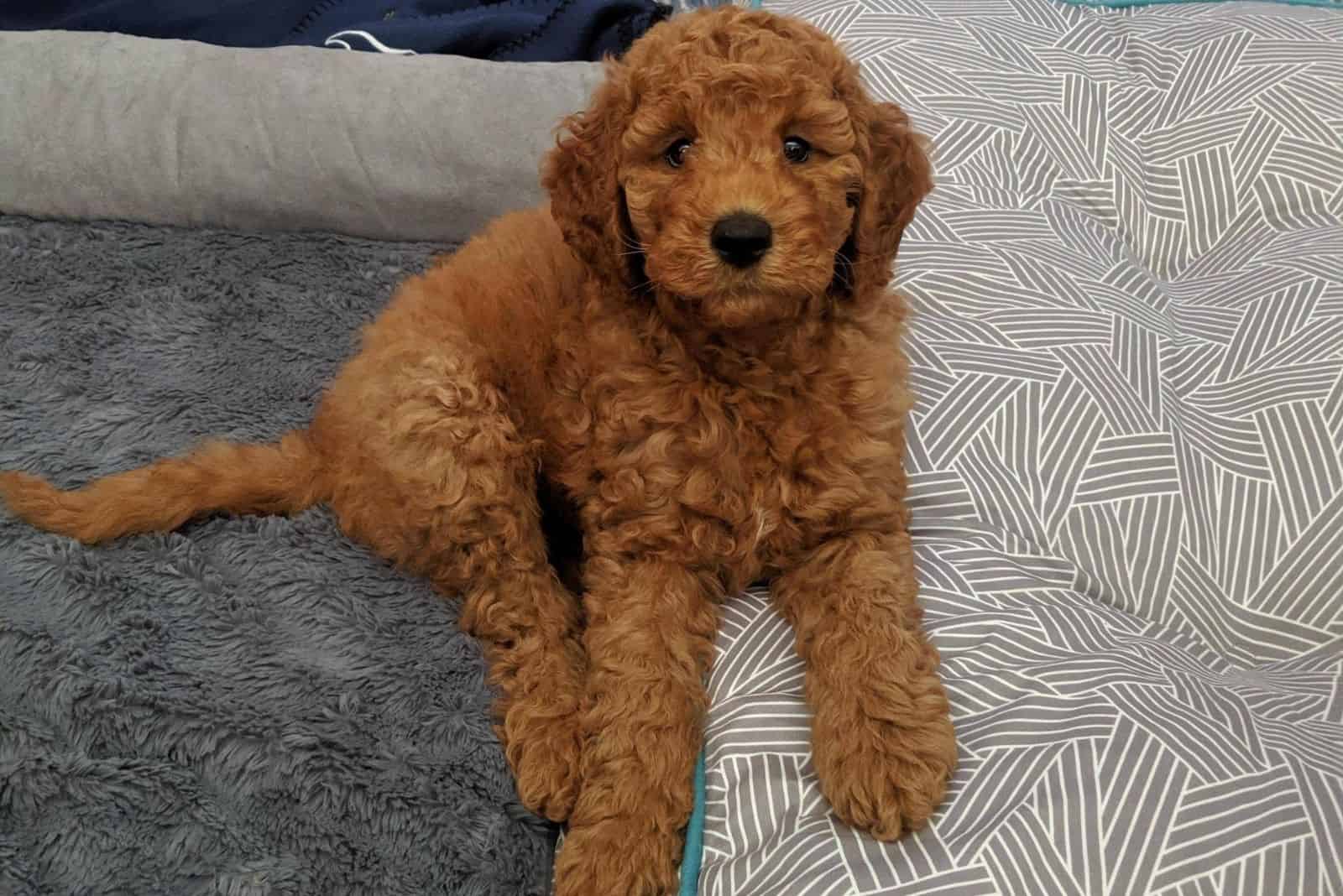
Probably the biggest question every potential F2B Goldendoodle owner asks is: do they shed and how much? We can add: and why not?
The F2B Goldendoodles are hypoallergenic dogs, carrying a non-shedding coat. Indeed, they don’t shed a lot of hair unless they’re seriously ill. Their hair does fall out, but it gets stuck to the coat.
Since the F2B Goldendoodles resemble a lot of the Poodle, they’ll likely be minimal shedders. Such dogs are ideal for people having mild allergies to even severe ones.
Pet hair is an allergy trigger in humans because it attracts dander. The protein in dander causes our immune system to react. That’s why people sneeze, that’s why they have a runny nose, and that’s why they develop hives!
No matter how much your pup sheds or doesn’t shed, it’s very important to try to minimize pet hair and dander at home. One of the ways is to vacuum regularly. Umm, Hooray?
Disclaimer: there are diseases like bacterial and fungal infections that cause dogs to lose lots of hair. You’ll recognize this by extensive shedding, itching, and skin redness. Keep an eye out for those symptoms!
Other nasty pests such as fleas can cause shedding, too. Parasites can cause itching, which leads to the dog biting, scratching, and itching more than before. Such a situation can cause major hair loss, but the good news is the vet can prevent it!
There you have it…
We hope you enjoyed reading about different generations of Goldendoodles!
Truly, it’s a lot to take in at once, but extensive research before bringing a Goldendoodle home must be conducted. A dog is there to love and take care of. Goldendoodles are a type that requires human touch every day.
If you’re not planning on spending quality time with your Goldendoodle, then don’t get one.
But, if you do… you’re about to see what a heart of gold looks like!
Read Next: The Ultimate Guide To The Flat Coat Goldendoodle
